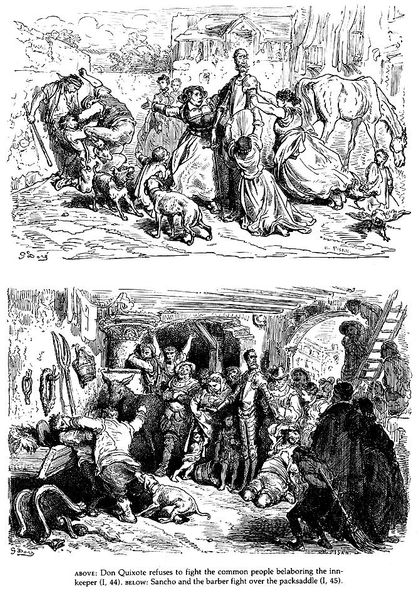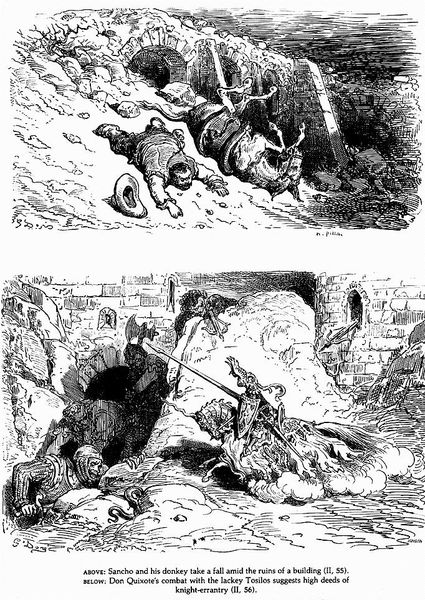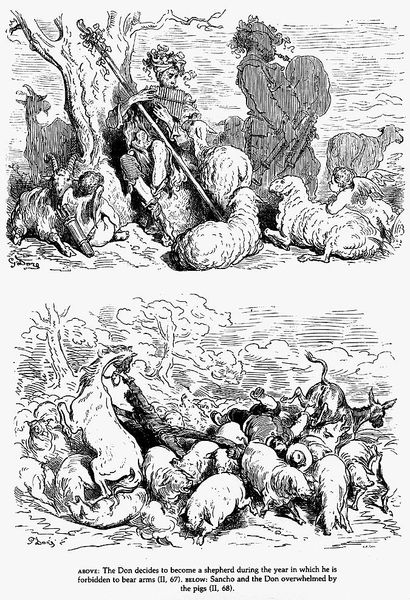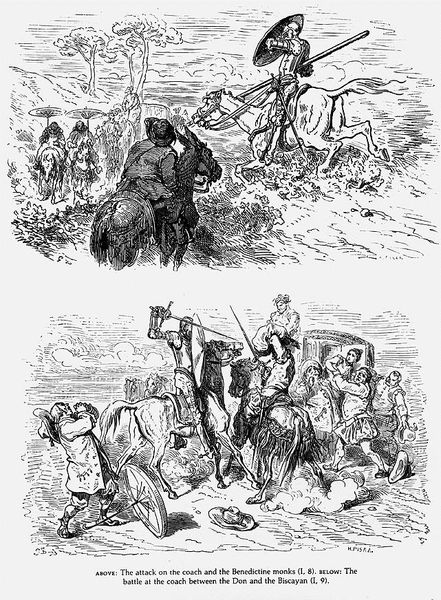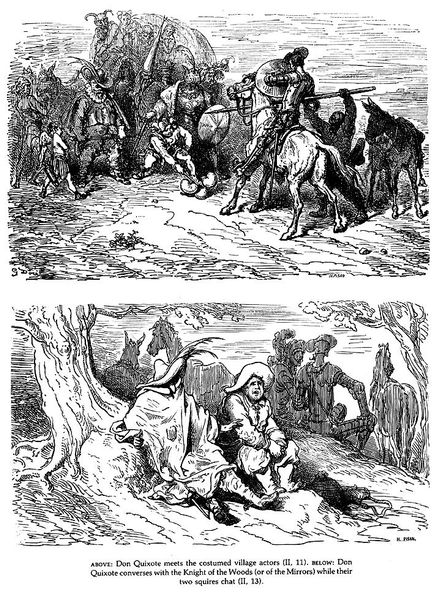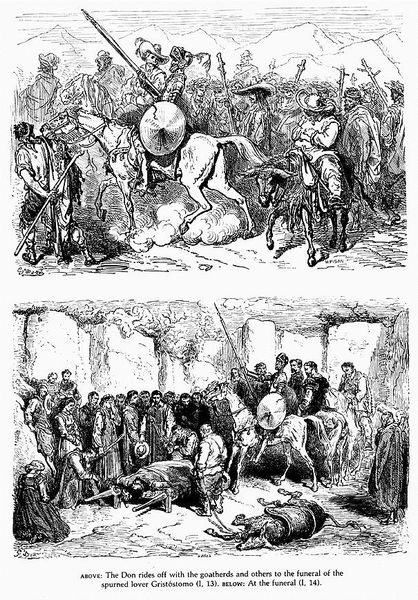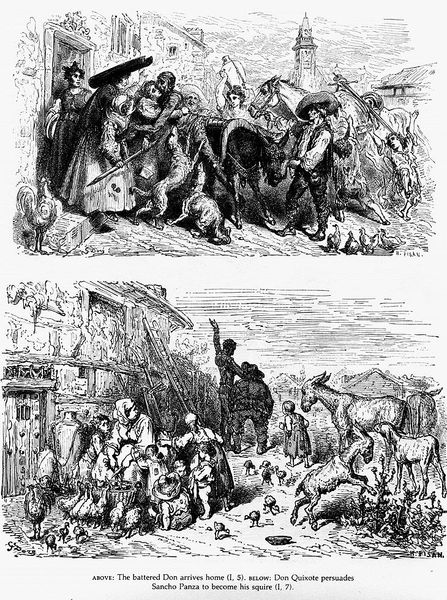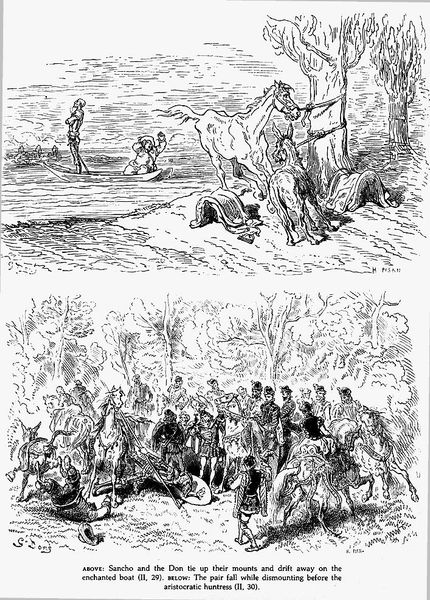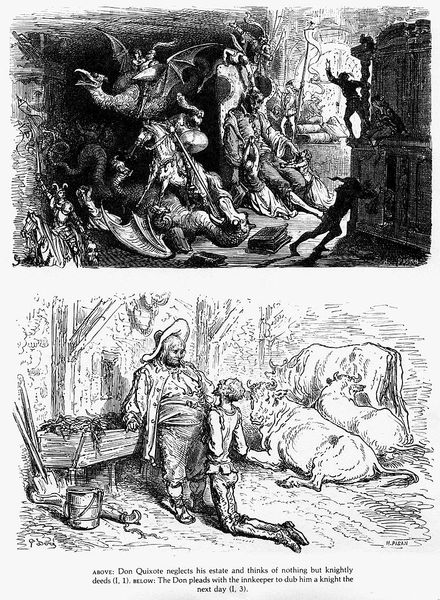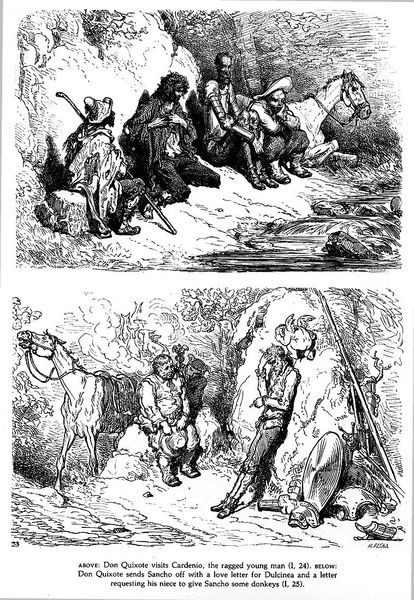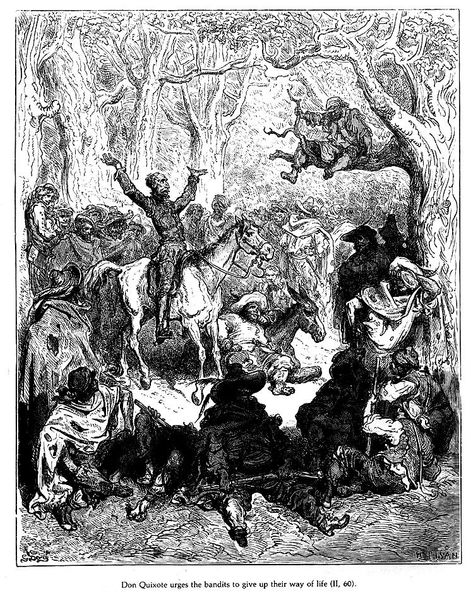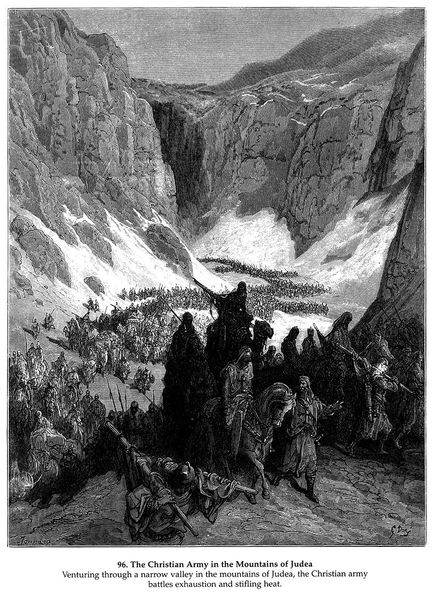
drawing, print, woodcut, engraving, frottage
#
drawing
#
narrative illustration
#
narrative-art
#
animal
# print
#
landscape
#
figuration
#
romanticism
#
woodcut
#
horse
#
line
#
history-painting
#
engraving
#
story boarding
#
frottage
Copyright: Public domain
Gustave Doré's "Don Quixote" is a 19th-century engraving, created using a painstaking process of carving lines into a metal plate, inking it, and then pressing it onto paper. The stark black lines against the white paper create dramatic contrasts that capture the story's energy, and reflect the detailed labor of the artisan. Look closely at the cross-hatching and fine details: these marks build up tone and texture, giving a sense of depth to the scene. The process emphasizes a sense of labor, as this print is the result of many hours of intense work. Doré was a prolific artist who made many of his engravings for mass publication. In this context, the print becomes part of a larger story about consumer culture, as books became more widely available during the industrial revolution. The detailed craft of engraving, combined with the scale of production, shows how art and labor intertwined during this period.
Comments
No comments
Be the first to comment and join the conversation on the ultimate creative platform.
